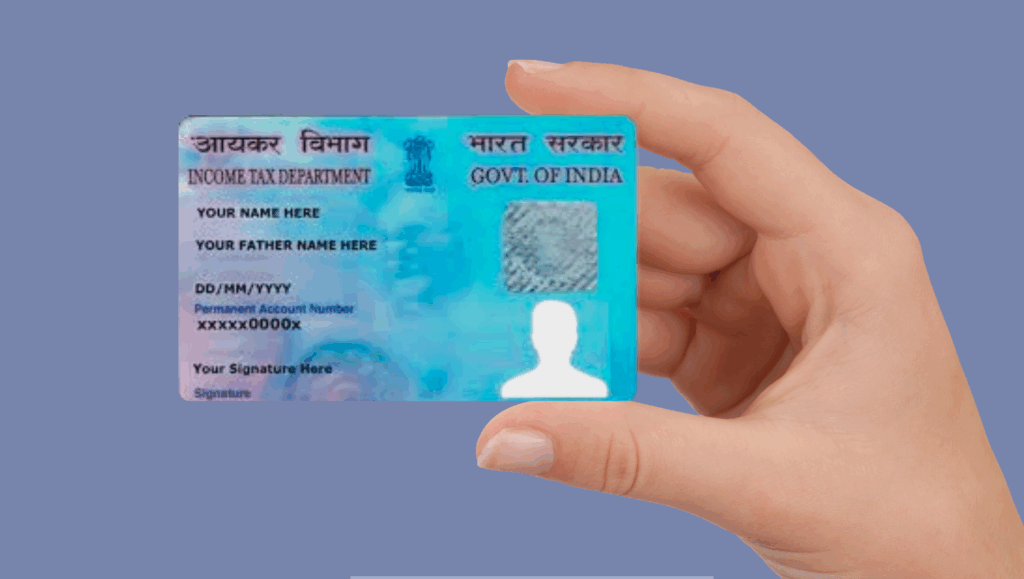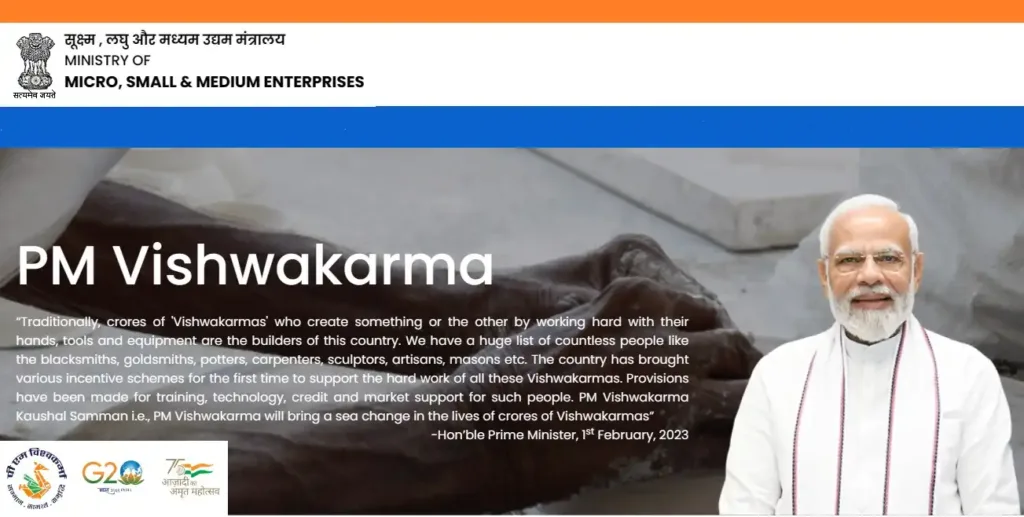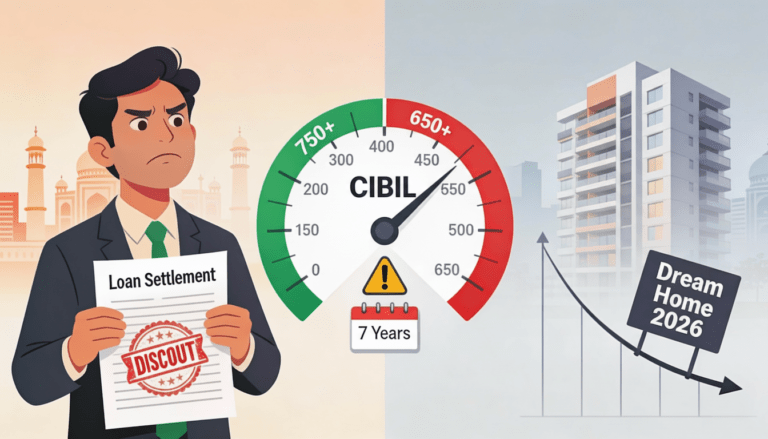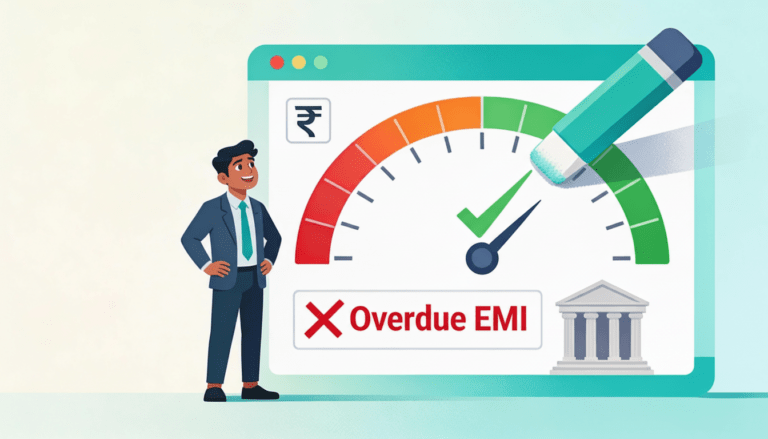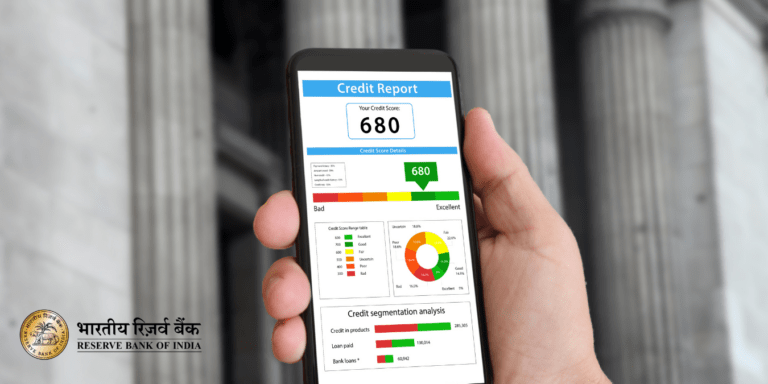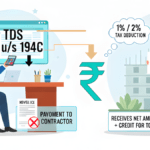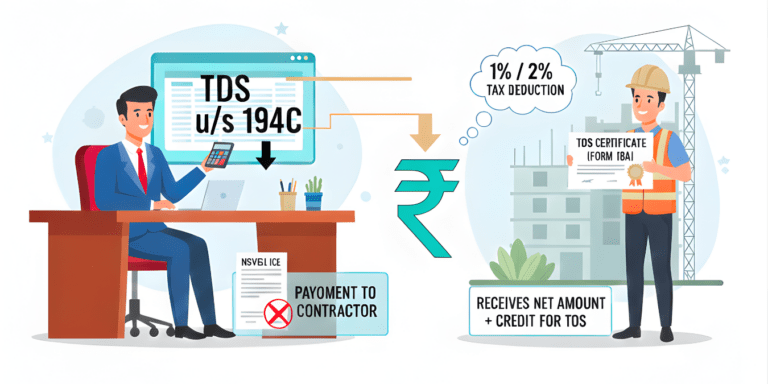
Starting Oct 2, Your EMIs Could Drop Faster: Why Jewellers and Borrowers Both Win Big This Year
This October 2, 2025—your EMIs may drop faster than ever, but not for the reason you think. The RBI has quietly changed loan reset rules, and the impact on home, car, and personal loans could save you lakhs—if you’re prepared. But there’s a twist: jewellers, co-operative banks, and even global investors stand to gain in ways borrowers haven’t seen before. What does this surprising rule change really mean for your future finances? The answer may shock you.
The Reserve Bank of India (RBI) has set the stage for a major financial shift starting October 2, 2025. Borrowers could see their EMIs drop faster thanks to revised lending rules that directly affect loan rate resets. Alongside this, fresh relaxations for jewellers, urban co-operative banks, and capital-raising norms for lenders could reshape credit availability across India. With crucial draft guidelines also open for feedback this month, this is the moment to understand how your money and financial decisions may be impacted.
RBI’s October 2, 2025, Game-Changers at a Glance
For instant answers on search intent like “RBI EMI rules 2025 impact,” here’s the featured snippet-style breakdown:
From October 2, 2025:
- Faster EMI Relief: Banks must shorten reset periods on benchmark-linked loans, passing repo cuts (now at 5.50%) within weeks, not quarters—saving borrowers up to ₹1,200 monthly on ₹50 lakh home loans.
- Jeweller Boost: Expanded working capital loans against bullion for gold manufacturers and Tier 3/4 urban co-operative banks (UCBs), easing festive inventory amid 27% demand dip from high prices.
- UCB Empowerment: Smaller city banks gain lending powers, channeling credit to Tier-2/3 hubs like Surat’s jewellery clusters.
- Capital Ease: Overseas perpetual debt instruments (PDIs) count up to 1.5% of risk-weighted assets (RWAs) in AT1 capital, fueling 10.3% YoY loan growth.
- Drafts Open Till Oct 20: Feedback on gold loans (repayment to 270 days), large exposures, intragroup limits, and weekly credit reporting for sharper data accuracy.
These tweaks align with RBI’s accommodative stance, projecting GDP at 6.5-7% amid 2.07% August CPI inflation.
Why This Matters Right Now for Indian Borrowers and Businesses
India’s 2025 festival season—Diwali, Dhanteras, weddings—fuels ₹1.2-1.4 lakh crore e-commerce GMV, up 20-25% YoY, with Tier 2-4 towns driving 70% loan surge. Yet, record gold at ₹1 lakh/10g slashes jewellery demand 27% from last year, per World Gold Council. RBI’s timely rules counter this: quicker EMIs ease household budgets strained by 17% Q2 jewellery drop, while jeweller relaxations inject liquidity into ₹5 lakh crore bullion market.
For 4 crore MSMEs, especially in gold hubs like Jaipur and Kolkata, UCB expansions mean cheaper working capital—vital as informal lending costs 24% vs. bank 10-12%. Banks, facing 7.8% Q1 GDP but lagging private capex, leverage AT1 hikes for aggressive festive lending. In short, as Navratri kicks off, these norms turn regulatory fine-print into real rupee relief, stabilizing finances amid GST cuts boosting discretionary spends.
The Big Change: Faster EMI Relief for Borrowers in a Rate-Cut Era
What’s Revolutionizing Loan Rate Rules
Pre-2025, floating loans reset every 3-12 months, delaying repo benefits—RBI’s 100 bps cuts since February barely dented EMIs for MCLR-linked holders. Now, the Reserve Bank of India (Interest Rate on Advances) Amendment Directions, 2025, mandate shorter cycles for external benchmark loans (90% of new retail/MSME credit).
Key shifts:
- Spread Flexibility: Banks can trim “other spread” (profit margins) before the 3-year lock-in, accelerating pass-through.
- Reset Options: Discretionary switch to fixed rates at reset, locking lows if hikes loom—building on 2023 mandates.
- Transparency Mandate: Quarterly statements detailing principal, interest, EMIs left, and APR, demystifying impacts.
With repo at 5.50% post-June’s 50 bps slash, expect home/car/personal loans at 8.25-8.50%, down from 8.75%.
Who Benefits Most from These 2025 Tweaks
India's ₹25 lakh crore home loan book sees max gains—average 15-20 year tenures mean 0.25% faster cuts save ₹4-5 lakh lifetime.
- Home Loan Holders: 3 crore families; a ₹50 lakh, 20-year loan at 8.50% EMI drops ₹43,391 to ₹42,431 post-25 bps cut, per EMI calculators.
- New Borrowers: Transparent repo-linking evens odds; festive offers waive fees, targeting 20% Q3 demand spike.
- SME Owners: ₹10 lakh crore outstanding; quicker working capital cuts costs 1-2%, boosting margins in export-driven sectors.
Women-led households (25% rise in borrowers) and Tier-2 youth gain most, as UPI-linked apps simplify switches.
Real-Life Example: Your EMI Savings Scenario
Take Priya, a Bengaluru IT pro with ₹40 lakh car loan at 9% (repo-linked). Pre-rules, December's projected 25 bps cut to 5.25% repo (SBI forecast) hits EMI in Q2 2026. Post-Oct 2: Reset in 1-2 months shaves ₹800-₹1,000 off her ₹35,000 EMI.
| Loan Type | Amount (₹) | Tenure | Old Reset Delay | New EMI Drop (25 bps) | Lifetime Savings |
| Home | 50 Lakh | 20 Yrs | 6-12 Months | ₹960/Mo | ₹4.7 Lakh |
| Car | 20 Lakh | 5 Yrs | 3-6 Months | ₹450/Mo | ₹27,000 |
| Personal | 5 Lakh | 3 Yrs | 3 Months | ₹250/Mo | ₹9,000 |
This isn't abstract—2025's 10.3% loan growth hinges on such relief, per Trading Economics.
RBI’s Relief for Jewellers and Bullion Industry Amid Festive Slump
Gold isn't just bling in India; it's ₹12 lakh crore economy's lifeblood, with 800 tonnes annual demand. Yet, 2025's 50% price surge curbs festive buys to 5-year low. RBI's Lending Against Gold and Silver Collateral Amendment counters with:
- Expanded Eligibility: Working capital loans to bullion users beyond jewellers—raw material manufacturers now qualify.
- UCB Inclusion: Tier 3/4 co-ops in Nashik, Varanasi join SCBs, democratizing ₹2 lakh crore gold loan pool.
- Silver Add-On: Loans against 92.5% pure silver ornaments/coins, up to 10kg/borrower.
Why It’s a Festive Lifeline
Diwali-Dhanteras sees 40% yearly gold sales, but 27% demand fall pressures ₹1 lakh crore turnover. Relaxations slash dependency on 24% informal rates, redirecting to 10% bank loans—boosting inventories for 12.5% forex gold reserves.
- Local Economy Surge: Tier-2/3 hubs (70% jewellery MSMEs) access UCBs; Surat's 5,000 units gain ₹50,000 crore liquidity.
- Export Edge: Cheaper capex aids 20% YoY jewellery exports, per WGC.
- Risk Check: LTV at 75%, monitored quarterly, curbs volatility.
A Kolkata jeweller like Anil could now finance ₹10 crore Dhanteras stock via UCB at 11%, vs. 18% private—pure Diwali dhamaka.
Capital Raising Made Easier for Banks: Fueling 2025 Growth
Decoding the AT1 PDI Shift
RBI's Basel III tweak lets SCBs (ex-RRBs) fold overseas PDIs (foreign/rupee bonds) into AT1 capital up to 1.5% RWAs—up from 2021's tighter caps. PDIs: Perpetual bonds sans maturity, paying indefinite coupons.
Why now? India's banks eye ₹5 lakh crore capex push; global pools offer 7-8% yields vs. domestic 9%.
Banks' Strategic Wins and Hidden Risks
Post-100 bps cuts, lending at 8.5% squeezes NIMs—AT1 eases fundraising for 15% retail growth.
- Deeper Pools: Overseas taps $2 trillion diaspora savings.
- Balance Boost: Strengthens CRAR to 14-15%, enabling festive blitz.
- Cost Edge: Rupee bonds at 7.5% vs. 9% local AT1.
Risks:
- Volatility Trap: Forex swings hit rupee PDIs; 2023 Credit Suisse wipeout echoes.
- Investor Jitters: AT1's "bail-in" clause deters if growth falters to 6.5%.
- Over-Reliance: Caps at 1.5% RWAs prevent dilution, but global hikes could spike costs.
SBI's ₹20,000 crore AT1 raise in H2 2025? A masterstroke for infrastructure loans.
Four Draft Circulars to Watch: Shape RBI's 2026 Playbook
RBI's Sept 30 invites feedback till Oct 20 on transformative drafts—your voice matters for 2026 norms.
- Gold Metal Loans (GML) Directions: Extends jeweller repayment to 270 days (from 180); adds non-manufacturers outsourcing production. Impacts: 20% more ₹1 lakh crore GML access, easing wedding-season cashflows.
- Large Exposures Framework (LEF): Caps big-corporate loans at 20% capital; clarifies foreign branch-head exposures. Benefit: Mitigates 2008-like concentration, with CRM extensions slashing risk weights 25%.
- Intragroup Exposures (ITE): Threshold ties to Tier-1 capital (not paid-up/reserves); limits promoter-group financing. Why? Curbs evergreening in ₹50,000 crore family biz loans.
- Credit Information Reporting Amendment: Weekly CIC submissions (from fortnightly); mandates CKYC capture, 7-day error fixes. Outcome: 30% faster scores, aiding 5 crore NTC borrowers.
Submit via RBI site—jewellers, submit on GML to extend to 360 days for true festive flex.
Step-by-Step Guide: Maximize RBI’s EMI Rule Benefits This Festive Season
Navratri's here—don't miss ₹2-5 lakh savings. Follow this for repo-linked bliss.
- Verify Loan Type: Log into app/portal; check if repo/RLLR-linked (90% new loans). MCLR? Switch via balance transfer—costs ₹5,000-10,000 but pays off.
- Probe Reset Cycle: Query bank on post-Oct 2 timelines; demand weekly updates per RBI transparency.
- Shop and Switch: Compare via BankBazaar—SBI at 8.4%, HDFC 8.6%. Festive waivers: Zero processing till Oct end at Canara/IDBI.
- Lock Festive Perks: Bundle with EMI holidays (up to 6 months) or cashback; monitor Dec cut forecasts for timing.
Pro Tip: Use Excel EMI calculator: PMT formula = [P × r × (1+r)^n] / [(1+r)^n – 1], where P=principal, r=monthly rate, n=tenure.
Pro Tips for Savvy Indian Borrowers in 2025
Festivals tempt overspend—stay ahead with these.
- Buffer Smartly: Stash 3-6 months EMI in liquid funds (7% returns); rates fell 100 bps, but hikes lurk if inflation hits 4%.
- Tenure vs. EMI Play: Post-cut, keep EMI fixed—shaves 2-3 years off ₹50 lakh loan, saving ₹3 lakh interest.
- Insure Wisely: Pair with term covers; falling EMIs free ₹500/month for SIPs in gold ETFs (up 30% YTD).
- Digital Hack: UPI auto-debits ensure no defaults; track CIBIL weekly via drafts for 50-point boosts.
For SMEs: Leverage UCB gold loans at 10.5% for Diwali stock—ROI 15-20% on sales.
Mistakes to Avoid: Don’t Let RBI Wins Slip Away
One wrong move, and savings evaporate—2025's 17% NTC drop shows caution pays.
- Passive Waiting: Banks lag transmission 20-30 days; nudge via email—RBI mandates action.
- Fee Traps: Hidden 1% refinance charges? Scrutinize; festive offers mask them.
- Over-Leverage Trap: Lower EMIs tempt ₹10 lakh extra car loan— but 2026 hikes reverse it. Cap DBR at 50%.
- Ignore Drafts: Miss Oct 20 feedback? Weaker GML norms hurt jewellers long-term.
Story: A Delhi borrower ignored reset, overpaying ₹50,000—your Diwali won't be that dim.
Expert Insights: RBI's Broader 2025 Strategy Unveiled
Analysts hail this as RBI's "growth-first" pivot post-7.8% Q1 GDP.
- Consumer Boost: Faster relief pre-festivals lifts sentiment; 25% e-comm jump aids ₹1.2 lakh crore GMV.
- MSME Revival: Gold/UCB tweaks target 30 million units; exports up 20% with cheaper capex.
- Bank Resilience: AT1 to 1.5% RWAs counters NPA dips to 2.5%; weekly reporting cuts fraud 15%.
Per Tata AMC's Murthy Nagarajan: "Expect 2.8% CPI revisions, holding 5.50% till Q1 2026." WGC adds: "Relaxed norms offset 27% demand slump, stabilizing ₹12 lakh crore sector."
Final Thought: Seize October 2 for a Prosperous Diwali 2025
Starting October 2, 2025, the RBI’s loan rate rule change could put real money back into your pocket—in the form of quicker, lower EMIs. Combine this with proactive steps like refinancing, choosing repo-linked loans, and monitoring circular outcomes, and you can maximise benefits.
For businesses, especially in jewellery and SME sectors, it’s an opportunity to access cheaper liquidity and gear up for festive demand. For banks, it’s a chance to expand lending by leveraging easier capital norms.
In a fast-changing regulatory environment, staying informed is your best financial strategy. If you’re a borrower, now is the moment to revisit your loans, talk to your bank, and make smarter borrowing decisions before Diwali deals roll in.
Disclaimer: The use of any third-party business logos in this content is for informational purposes only and does not imply endorsement or affiliation. All logos are the property of their respective owners, and their use complies with fair use guidelines. For official information, refer to the respective company’s website.



